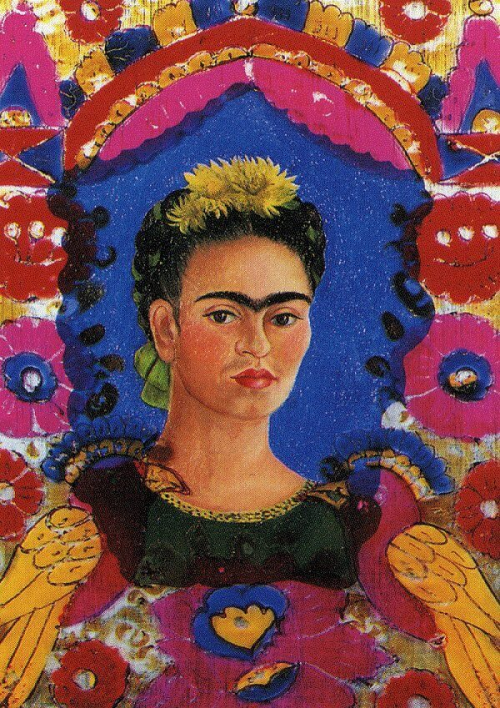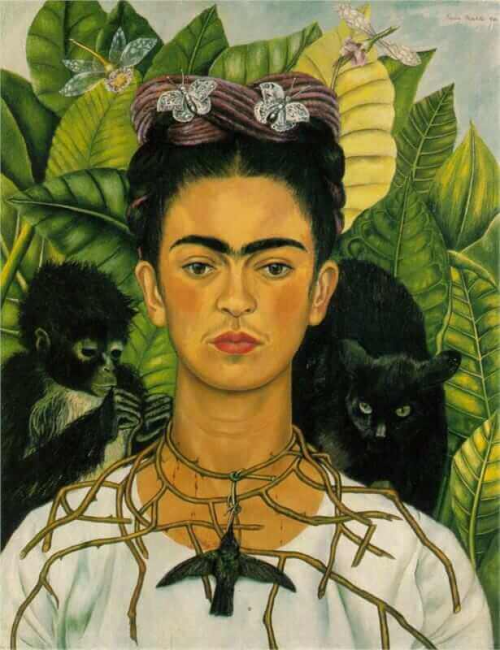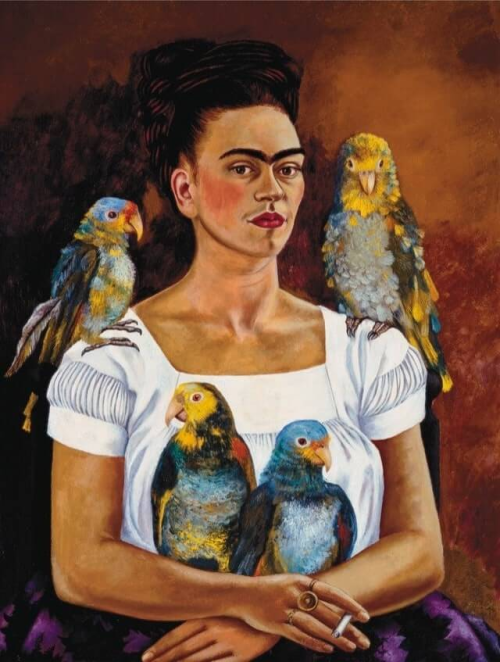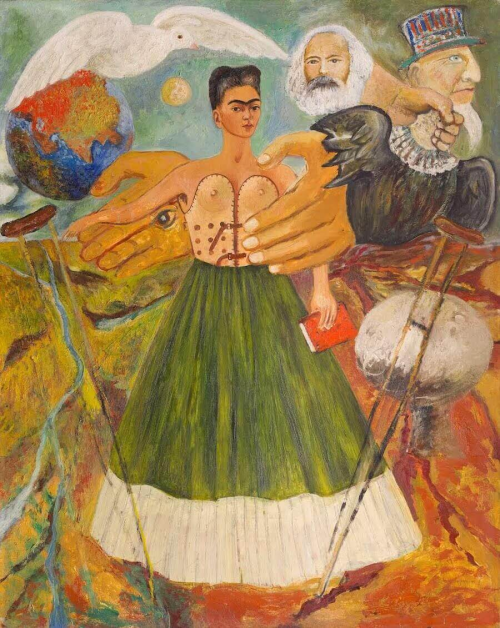Halfway through Hispanic Heritage Month, it’s time to talk about Frida Kahlo. Magdalena Carmen Frida Kahlo y Calderón (1907-1954) was a Mexican painter and a badass. A communist, a disabled, bisexual woman of color, and one of the greatest artists in human history, it’s no wonder that Kahlo’s work is known around the world.
[“The Frame” by Frida Kahlo. 1938]
Kahlo was disabled by polio as a child and then was in a bus accident, effectively ending her aspirations to go to medical school (which had very recently opened its doors to women), Kahlo began to paint herself while recovering in bed, sometimes using a harness around her head to help her look at her easel.
[“Self-Portrait with Thorn Necklace and Hummingbird” by Frida Kahlo. 1940]
She quickly grew in talent and fame, and traveled international to the United States and Europe to put on exhibitions. She also taught students at the Escuela Nacional de Pintura, Escultura, y Grabado.
[“Me and My Parrots” by Frida Kahlo. 1941]
Her paintings death with wellness and disability, politics, self, death, Mexican identity, gender, class, and postcolonialism. Her art style is Surrealist and Magical Realist. She was the first Mexican artist to be featured in the Louvre, and is an icon in Chicano, feminist, and queer history.
[“Marxism Will Give Health to the Sick” by Frida Kahlo. 1954]



